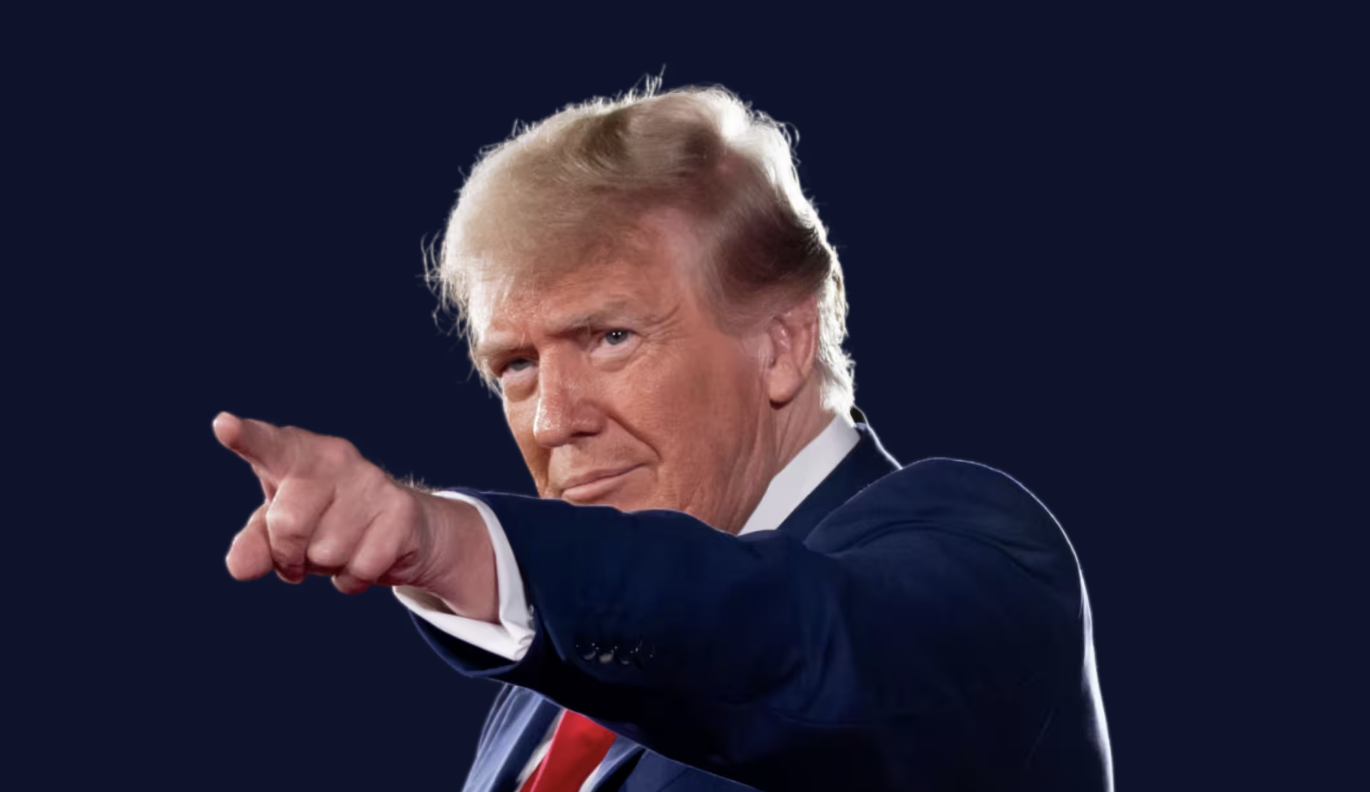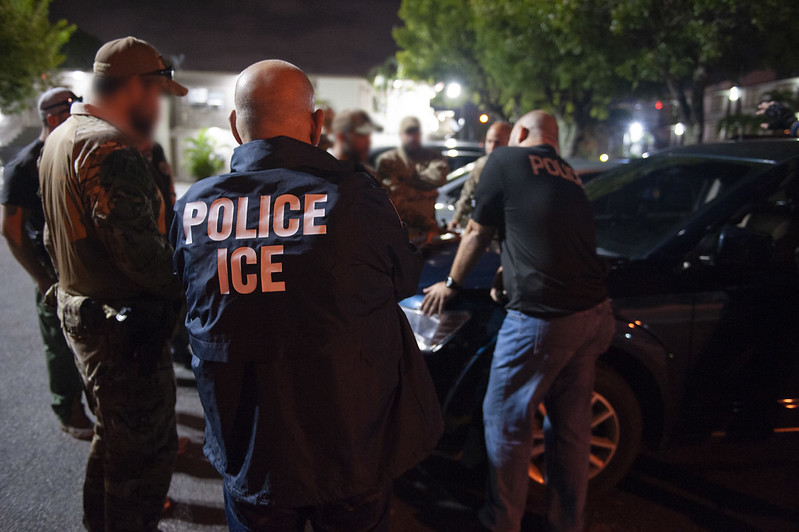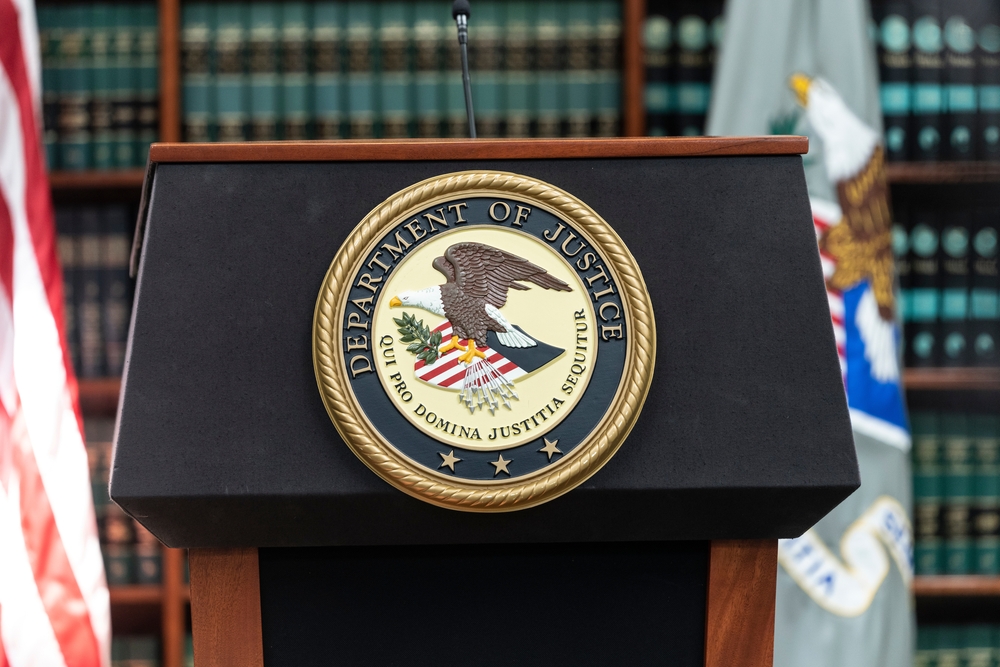James R. Fitzgerald spent 31 years in law enforcement – 11 years as a Bensalem (PA) police officer/detective/sergeant and 20 years in the FBI as an agent/supervisor/profiler/forensic linguist – before retiring in 2007. He is now a consultant and an author.
By James R. Fitzgerald, FBI (Ret.)
If you watched the eight-hour Discovery Channel scripted limited-series, Manhunt: Unabomber, which aired during the summer of 2017, and is presently available on DVD, Netflix, and other streaming services, you may recall the protagonist of the series.
His name was Jim Fitzgerald, aka, “Fitz.” He was portrayed by actor Sam Worthington. Well, it’s the “real” Fitz (as opposed to the “reel” Fitz) who is the author of the article you are presently reading. I’m the now-retired FBI agent/supervisor/criminal profiler/forensic linguist who was directly involved in the actual Unabom case and helped finally bring the 17-year-long investigation to its conclusion with the arrest of Theodore J. Kaczynski in 1996.
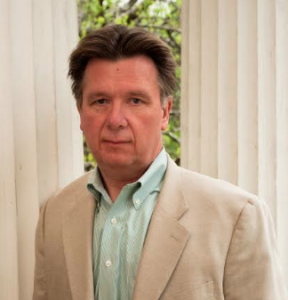
I chose to submit this article to ticklethewire.com to address numerous false allegations made about me and my role in the Unabom investigation in two separate articles previously published on this site. They were each written by an individual named Greg Stejskal.
In both of these articles (dated August 10, 2017 and January 05, 2018) he presented opinions regarding Manhunt, which were very negative regarding its plotline, its supposed historical inaccuracy and other related issues. At the same time, he alleged certain “facts” which were very negative regarding me. Upon reading Stejskal’s second article, I decided to take this opportunity to provide a public retort to both of them and his continued grossly inaccurate statements about me, the “real” Fitz, which are contained therein.
Before proceeding any further, let me clearly state that I have no problem whatsoever with Stejskal expressing his negativity toward the “Based on True Events” Manhunt: Unabomber series.
If he sincerely didn’t like it for whatever reasons, he certainly has a right to express his opinions including in forums such as ticklethewire.com – even if he only watched one episode of Manhunt before writing and submitting his first highly deleterious critique, in which it is evident that he doesn’t seem to quite comprehend that the series was not a documentary, that he has little, if any, concept of what is a “composite character,” and that he apparently lacks an understanding of what the phrase “Based on…” means in Hollywood parlance.
That being said, when I read in Stejskal’s second article the repeated and demonstrably erroneous accounts of the Real Fitz’s/my role, or alleged non-role, while assigned to the Unabom Task Force (UTF) in ’95 and ’96, despite my well-documented contributions to the eventual identification, arrest, and successful prosecution of Kaczynski, I knew it was time to respond to Stejskal and his repeated “fake news,” certainly as it pertained to me.
By the way, if you haven’t read his second article, Stejskal, also a retired FBI agent, cites a recent letter ostensibly written by Ted Kaczynski, a.k.a., the Unabomber, in a bizarre attempt to somehow bolster his (Stejskal’s) negative opinion of Manhunt. (Spoiler alert: the Unabomber didn’t like the series either – even though, like Stejskal, he never actually watched it.)
I’ll withhold the behavioral implications of this peculiar dynamic for perhaps a subsequent article. However, I will state here that if another FBI agent has ever quoted an imprisoned convicted serial killer to enhance his or her own personal image, reputation, opinion, and/or agenda, to somehow prove he or she was “right” about something outside of law enforcement circles (in this case, doubts about the accuracy of a television show), I’m not aware of it. Stejskal may be a true trailblazer in this regard.
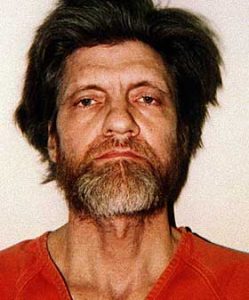
Before getting into the facts regarding my real role in the Unabom case, a brief summary is in order regarding the genesis of Manhunt: Unabomber. How it made its way from the sloping hills of Lincoln, Montana, to the rolling streets of San Francisco to the Atlanta area (where it was filmed), to the Discovery Channel and other media is an interesting story in and of itself.
After Retiring
The making of Manhunt began in earnest when I first retired from the FBI in 2007. That’s when my good friend Jim Clemente (a fellow FBI profiler; ret. 2009) and I got together and decided that telling the story of the Unabom investigation in a television limited-series format would be a highly worthwhile undertaking.
We wanted to showcase to the world how our agency, the FBI, initially struggled, but then finally succeeded in resolving this 17-year-long investigation of an unknown serial bomber who had killed three, seriously injured dozens, and almost brought down a commercial airliner.
While committing these crimes, this nameless offender was also taunting the FBI and the public with his various pseudonymous letters (each signed with only “FC”), not to mention trying to get his “Article,” a.k.a., Manifesto, published in a mainstream newspaper. Clemente and I knew we had in this long-term investigation an excellent story about a group of dedicated agents and analysts going up against the consummate criminal mastermind, the likes of which U.S. law enforcement, to include the FBI, had never before encountered. We even came up with an early working title for the series – Manifesto. Now, it was time to put pen to paper, or more accurately, fingers to keyboard. And that’s exactly what we did.
Jim Clemente and I eventually brought our friend Tony Gittelson into the project. He is a long-time professional screenwriter based in Los Angeles.
Once he was on board, we collectively kicked into high gear with the script writing. It was agreed from the outset that this series was to be about how the FBI as a team resolved the case, not any one individual person. However, we also knew from the beginning that the language analysis aspect of the Unabomber’s (and later Kaczynski’s) writings, which my small group of agents and analysts and I undertook while at the UTF, played a very significant role in the investigation’s ultimate resolution.
After all, our linguistic findings were one of the primary components of the probable cause affidavit attached to the search warrant application for Kaczynski’s mountainside cabin in Montana.
As such, “Fitz” would be at least one of the primary characters portrayed in the series. This was because I did, in fact, play a critical role in the investigation, certainly during the ’95-’96 timeframe. That is when I was assigned by the UTF management to build from scratch and then direct the so-called Comparative Analysis Project, whose mission was the linguistic comparison of the 14 Unabomb documents to each other with one another, and eventually, with the 178 documents known to have been authored by Kaczynski. It was my team and I who determined in a little more than five weeks that these disparate writings came from one person and one person only. Yes, FC was, in fact, Ted Kaczynski…and vice-versa.
Gittelson, our experienced co-writer, reminded Clemente and me that when pitching scripts and series ideas to studio heads, we would need to provide them with something about our story which made it different from other true crime procedurals – a “hook,” as they call it in Hollywood.
Linguistic/Language Analysis
After some discussion, we wholeheartedly believed that the forensic linguistic/language analysis aspect of the case would be our “hook.” As it turns out, Gittelson was correct. In mid-2015, Clemente and Gittelson pitched the series idea to the Discovery Channel executives. I wasn’t there that day, but I’m told that within ten minutes the executives proclaimed aloud that they loved the story, the characters, and everything about it. They wanted it to air on their network. So, before long, the three of us signed contracts. Manifesto had been greenlighted.
Happy days! Well, for a short while, anyway.
Unfortunately, before too much longer and without any real explanation, Clemente and Gittelson were fired from the newly renamed Manhunt: Unabomber series. (This happens not infrequently in Hollywood, I came to learn.) I was very disappointed with my friends’ dismissal, but I was still contractually obligated to work with the Discovery people.
So, I did. I met the new head writer, the director, talented people both, and I provided the facts (and nothing but the actual facts) to them about the Unabom case, the various hard-working members of the UTF, and my role while assigned there as a brand-new profiler.
I provided numerous materials to them regarding the case, including a 300-slide PowerPoint presentation I’d developed over the years, a 2004 book chapter I wrote, various print and electronic media interviews in which I had participated, and the outline of Chapter 20 of my 2017 book, A Journey to the Center of the Mind, Book III – The (First Ten) FBI Years. Throughout my interactions with the Manifesto production team, as in everything I had written before, during, and after the development, production, and airing of the series, I adamantly maintained that the arrest of the Unabomber was a team effort. There was no one person, to include me, who individually identified Kaczynski and eventually arrested him, prosecuted him, and put him behind bars for life.
Even with my repeating of the above facts (and again, nothing but the actual facts) over and over again, the new folks running Manhunt decided to take the series into some slightly different directions.
“Fitz” was now going to be the main character, the protagonist, in the series. (Naturally, Ted Kaczynski, as portrayed by actor Paul Bettany, was to be the antagonist.) In this version of the story, my character was doing some things that in real life I didn’t actually do while at the UTF.
Dramatic License
They were using dramatic license to turn me, the real Fitz, into a composite character, an amalgam, of me and several other FBI agents. Once I read the first drafts of the scripts and learned of this change of direction, I argued vehemently with the writer and the rest of the production team, stressing my dissatisfaction with their revised portrayal of the now semi-fictionalized “Fitz” character.
But ultimately, I lost the arguments. The writing continued and the shooting of the series started in Atlanta. Then it premiered on the Discovery Channel on August 1, 2017, for its seven-week run. High ratings and almost unanimous positive reviews followed shortly thereafter. By all accounts, it was a genuine hit.
Which brings us to Greg Stejskal and his two articles on ticklethewire.com. Again, disregarding his intense dislike of the series (which in and of itself is of no concern to me), here are a few pull-quotes from these articles about me, the “real” Jim Fitzgerald.
Fitzgerald was a “minor player” in the Unabom investigation;
Fitzgerald was “part-time” and “only on the team for a matter of months;”
Regarding the debate whether to publish the Manifesto or not, “Jim Fitzgerald had no part in this process.”
There is more that Stejskal wrote in less than favorable terms about me. The above three alleged “facts” are the essence of Stejskal’s contention that I played, at best, a minimal role in the Unabom investigation and therefore should not have been portrayed otherwise in the Manhunt series.
As Daniel Patrick Moynihan once said, “Everyone is entitled to his [sic] own opinion, but not his own facts.”
Well, Stejskal’s “facts” are wrong. They are actually very wrong. And interestingly, Stejskal knew he was wrong. If not when he wrote the August ‘17 article, with its lack of citation to even readily available public source material about me and my role at the UTF, then certainly by the time of his follow-up article in January ’18.
This is because by that time I had already addressed his careless, lazy, perhaps agenda-driven reportage in two separate posts I made to a list of former FBI agents, “xgboys,” to which both of us are subscribing members. These were in July ’17 and again in September ’17, immediately prior to and after the series’ initial seven-week run. Yet, subsequent to these widely circulated postings in which I pointedly advised, indeed corrected Stejskal, he proceeded to again write the same untruths about me in his second article for ticklethewire.com.
So, now I feel that I must address said misinformation, point-by-point, for Stejskal and the other readers of ticklethewire.com.
The following is an updated version of the list of facts I posted to Stejskal and my fellow retired FBI agents on the “xgboys” listserv in 2017. Each one easily refutes Stejskal’s assertions regarding my role in the actual Unabom investigation.
I was physically on-scene at the UTF (in either California or Montana) from July to December of ’95; two weeks in mid-January’96; from February to May of ’96; from September to December of ’96; and for a week in January of ‘98. Even just counting my time at the UTF before Kaczynski’s arrest, I was there for eight and a half out of ten months, plus additional months afterwards as management kept inviting me (actually ordering me) back from my full-time assignment at the Profiling Unit in Quantico, Va. If that’s “part-time” as suggested by Stejskal, I suppose the rest of the dozens of agents and analysts from other divisions also on Temporary Duty (TDY) at the UTF were day-workers. (The average TDY assignment to the UTF was approximately 30-60 days.)
To put the above into better context, no agent from any other FBI division was assigned to the UTF in TDY status for a longer duration than I. Not a one! I may have been there for only a “matter of months” as per Stejskal’s articles, but those months added up to over a year in total, including during the most critical period of the investigation, the time immediately prior to Kaczynski’s arrest.
Turchie Affidavit
In April, 1996, the so-called “Turchie Affidavit” was presented to a federal judge. It was written by Terry Turchie, part of the upper management team at the UTF, and was attached to the FBI’s warrant application to search Kaczynski’s cabin. Paragraph 110 of the affidavit reads: “The affiant has consulted with and reviewed the findings of FBI Supervisory Special Agent James R. Fitzgerald, who has directed the comparative analysis of all of Theodore Kaczynski’s correspondence and documentation in a side-by-side comparison of the UNABOM letters and 56 page manuscript entitled Industrial Society and Its Future. Through this study SSA Fitzgerald has informed the affiant that the content, context and writing style of Theodore Kaczynski’s 6,374 word, 23-page, essay (attachment 3) and the 34,649 word UNABOM manuscript (attachment 2) are very similar. Some of those similarities are as follows:”
The next ten or so paragraphs consist of just a portion of the 600-plus textual similarities my team and I uncovered and codified between the writings of Ted Kaczynski and the Unabomber, including the now well-known phrase, “You can’t eat your cake and have it too.” The language evidence turned out to be one of the key factors to getting the cabin search warrant approved and signed by the federal judge in Montana.
(In a radio interview conducted in September of ’17, Stejskal credits and compliments Terry Turchie for his work in preparing obtaining the actual search warrant itself. I don’t disagree with him at all in this regard, but it’s clearly apparent he never read as far as paragraph 110 before writing his two articles.)
In my most recent book, A Journey to the Center of the Mind, Book III – The (First Ten) FBI Years, published in July 2017, I include a long, detailed chapter regarding my role in the Unabom case. In it, I praise many men and women of the FBI and the UTF who collectively helped solve the Unabom case. My factual account also includes the details of my helping to convince the UTF management that we should, in fact, advocate for the publication of the Manifesto in the Washington Post. I presume that Stejskal has not yet read my book, or at least not Chapter 20.
In the event Stejskal doubted the objectivity of my own account, in my September post to the xgboys list, I directed him to Unabomber: How the FBI Broke its own Rules and Captured the Terrorist Ted Kaczynksi, a 2014 book about the Unabom investigation co-written by Jim Freeman, Terry D. Turchie, and Max Noel, the three members of the UTF management team. My role in the case is mentioned numerous times in their book, including on pages 237-238, regarding my direct involvement in urging for the publication of the Manifesto to the UTF management folks. I presume that Stejskal also has not yet read this book, or for some reason decided to skip over the Jim Fitzgerald references.
In 1999, a year-plus after the guilty plea and official sentencing of Ted Kaczynski, I received an “Incentive Award” from the FBI for my work in the Unabom investigation. (Incentive Awards are given out on occasion to agents, analysts, and other FBI employees for what is considered exemplary work. They sometimes include cash bonuses.) In my case, I was awarded the highest dollar amount allowed at the time for agents and supervisory agents. Apparently, the UTF management team thought I did a pretty good job in my “minor role” for the “matter of months” I spent working on the UTF while there.
In 2000, in Washington, D.C., then-Assistant Deputy Director of the FBI Terry Turchie presented me with a plaque in recognition of my work on the Unabom case. Beneath the UTF seal are the words, “To James R. Fitzgerald…for Valuable Assistance to the Matter of United States v. Theodore J. Kaczynski, 1995-1998.” It still proudly hangs on a wall in my home office.
In his August ’17 article, Stejskal wrote with seemingly great distress about the fact that in Manhunt: Unabomber there were scenes in which “Fitz” interviewed “Ted” on several occasions. As I readily acknowledged in my earlier posts, these scenes from the series were fictitious.
They never happened in real life, nor did I ever assert that they did. In fact, when I first read of these scenes in early scripts, I was quite upset. I stated as much in my July ’17 post to the xgboys list. Apparently, that posting wasn’t good enough for Stejskal, as he continued to besmirch me in both of his forthcoming articles.
(A reality check here: No one in law enforcement actually “interviewed” Kaczynski. A few agents sat across a table from him in the first few hours after his arrest and they tried their best, but besides Ted giving them his name and asking for a certain candy bar, there was no formal interview, and no verbal evidentiary information whatsoever was ever attained from him.)
Statement From Manhunt Writer
To reinforce this interview/no interview notion for Stejskal, I asked the head writer of Manhunt, Andrew Sodroski, to provide me with a formal statement relating his interactions with me during pre-production of the series. This statement reads as follows:
“I’m Andrew Sodroski, the writer/creator of MANHUNT: UNABOMBER. I’m the one who figured out how to turn the facts of the Unabom case into an emotional, compelling TV drama. One of the ways I did this was by inventing a fictional plotline in which the ‘Fitz’ character interrogates Ted Kaczynski. I invented this story to bring our two lead actors together face-to-face, and to hook the audience on the cat-and-mouse drama of ‘Fitz v. Ted.’ However, everyone involved knew this was a fictional device created entirely by me.
The real Jim Fitzgerald never claimed to have interrogated Ted. He did not suggest that this story be part of the show. In fact, he strenuously objected when he found out that we were planning to include this plotline. We overruled his objections in the interests of making a dramatically satisfying narrative. The entire team (Fitz included) has made it clear in interviews, press, and publicity that the Fitz/Ted interrogations are fictional, part of the dramatic license I needed to take to tell this story in an exciting, compelling way.
Jim Fitzgerald has always been a stickler for the facts; the dramatic licenses were entirely my own.”
The Real Jim Fitzgerald has never met Greg Stejskal. I never even heard his name before his August ticklethewire.com Unabomb article. He was not a member of the Unabom Task Force, and if he played any role, significant or not, in the Unabom investigation, it wasn’t documented anywhere that I ever read. His name does not appear in either of the books referenced above, in any of the Unabom affidavits or reports I reviewed during my time at the UTF, or in any of the case documents I maintained after my year-plus of direct involvement with the Unabomb investigation came to an end.
Stejskal can offer no legitimate rationale for his purposeful misrepresentations of me and my role at the UTF in either of his ticklethewire.com articles – except for the fact that he seemingly did not like the Manhunt: Unabomber series. He knew of my previously posted and easily verifiable counter-arguments on the ex-FBI agent listserv, but that wasn’t enough for this fact-deficient former agent cum wannabe TV (and Jim Fitzgerald) critic. He has spread his misinformation about me now on two separate occasions, for whatever agenda-driven reasons he has chosen to do so.
Interestingly, in the above-mentioned radio interview with Stejskal in September of ’17, the show host began her introduction by stating about the Unabomber, “He may have never been caught if it weren’t for a little help from here in Ann Arbor (Michigan).” She was referring to a routine investigative lead Stejskal covered at the University of Michigan in February of ’96. This lead and its results played no role whatsoever in the furtherance of the Unabom investigation. However, Stejskal never corrected the host and went on to later recount this relatively minor event during his 14-minute interview.
“He may have never been caught…?” Really, Greg? That’s a bit of “dramatic license” on the host’s part, wouldn’t you agree, Stejskal? Yes, it was, without a doubt. At least I tried to correct the writer on Manhunt. How about you with the radio host?
However, Stejskal apparently only seems to be bothered by this common media/entertainment phenomenon when it’s applied to someone else, not to him – especially a certain someone else named Jim Fitzgerald.
I’m not sure who or what Stejskal’s sources may have been for his ongoing false allegations about me and my accomplishments while assigned to the Unabom Task Force. Whoever or whatever they may be, he may want to reconsider their accuracy in any future articles he chooses to write.
And speaking of which, on January 10, 2018, I posted on the ex-FBI agent listserv a direct challenge to Stejskal to identify the “sources” he used when writing about me and my supposed minor role and limited time at the UTF.
As of this writing, it’s been two weeks – no response from the man.
In closing, one doesn’t have to be a criminal profiler or a forensic linguist to realize that Stejskal’s continued silence regarding his alleged sources speaks volumes regarding what he wrote about me. Quite frankly, it speaks volumes about him, too.



